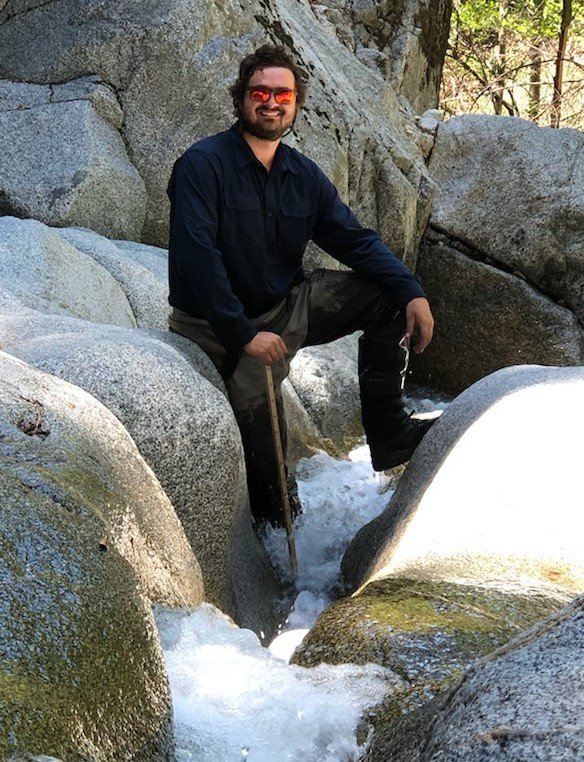dylan white
The influence of nutrients on the accumulation of dissolved, colloidal, and particulate metals in a stream food web
Globally, streams and rivers have become impaired due to excess trace metals and nutrient inputs. Understanding the ecosystem effects of trace metal and phosphorus contamination is complicated because their bioavailability changes based on their form. Contaminant form is commonly described in terms of size fraction using an operational definition based on what passes through a filter (200, 450, or 700 nm). Everything that passes through the filter is defined as dissolved and bioavailable, while everything that remains on the filter is termed particulate. However, this is a poorly characterized definition as there are many small colloidal-sized(1 – 1000 nm) particles in the “dissolved” category, which are reactive and sorb toxic metals, phosphorus, and organic contaminants. Colloidal particles can facilitate the transport of sorbed elements and alter the fate and bioavailability of those contaminants. Additionally, algal blooms, stimulated by nutrients, can affect metal accumulation in river food webs. Algal biofilms accumulate trace metals; however, it is unclear how the increased primary productivity of algal blooms affects the accumulation and trophic transfer of metal contamination. Understanding how algal blooms and colloidal particles affect the accumulation of metals in periphyton and aquatic invertebrates will help researchers better understand contaminant fate and transport and help managers focus remediation efforts.
Dylan White is a Ph.D. student at the University of Montana. His research describes the presence, form, and fate of colloidal particles in Upper Clark Fork River, a mining and agriculture affected river. Broadly, he is interested in how anthropogenic stressors affect aquatic ecosystems. When not working on his research, you might find him “surveying” the watershed from one of the many bike trails or skin tracks in the five valleys surrounding Missoula.


